1. Location (on a map) of collection: Volcano, CA - Which is near Pioneer and Sutter Creek
2. Date of collection: 9/29
3. Habitat of collection: Rotting oak logs
4. Length (from head to gaster): ~19 mm
5. Color, hue, pattern and texture: Black and glossy all over. All workers were glossy and black as well.
6. Distinguishing characteristics: Large, black, glossy, Large jaws
7. Distinguishing behavior: Its was about 86 degrees, they were very fast.
8. Nest description: Oak logs
9. Nuptial flight time and date: didn't witness a flight
My parents have 5.5 acres in Volcano, CA and its mostly a wooded area with pines and oaks. Tons and tons of ants and ant mounds can be seen everywhere. There are also stacks of pine and oak logs as well as some fallen trees.
These were the largest of the different ants I saw and were all over the oak logs and in some rotten stumps.
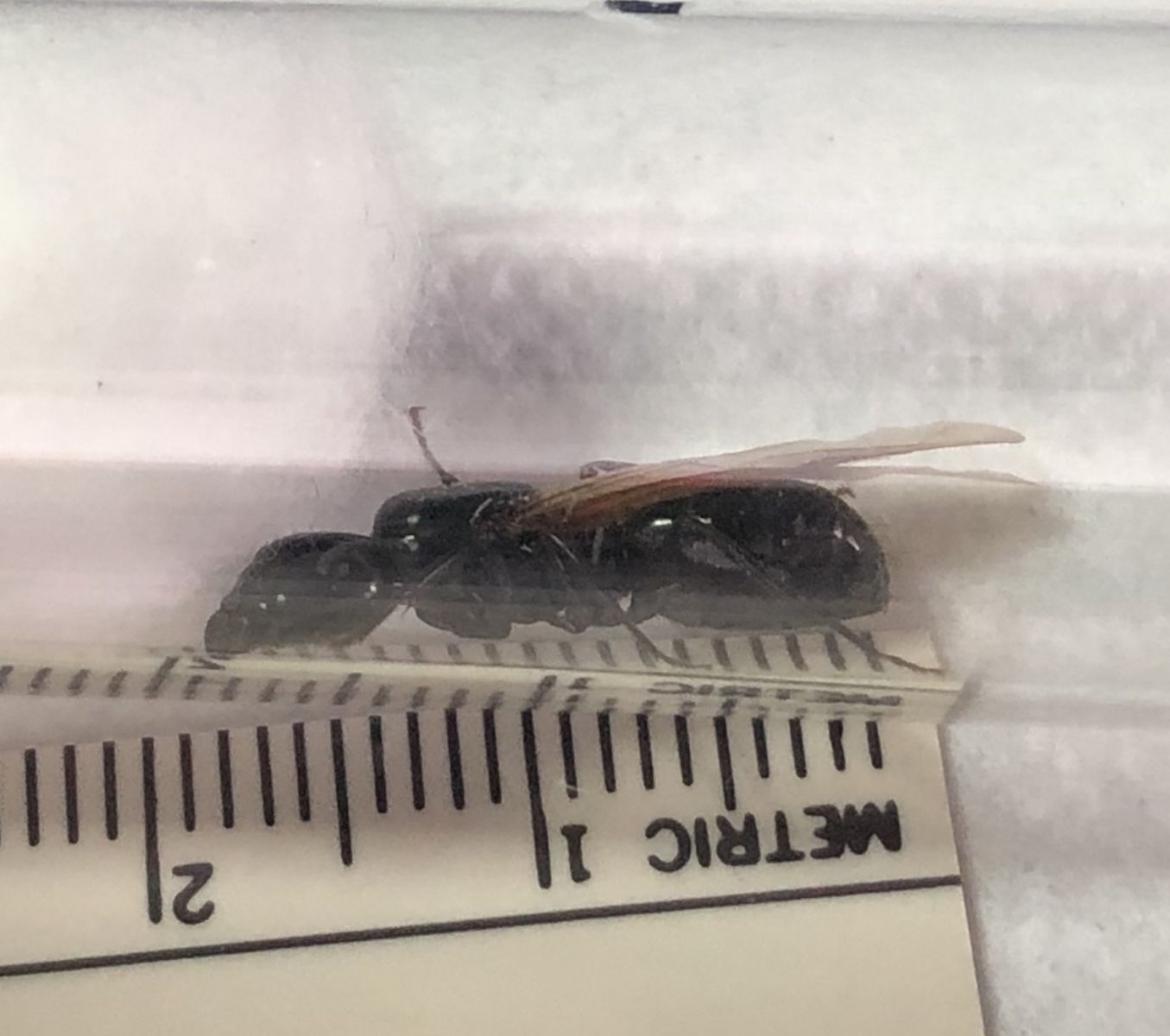
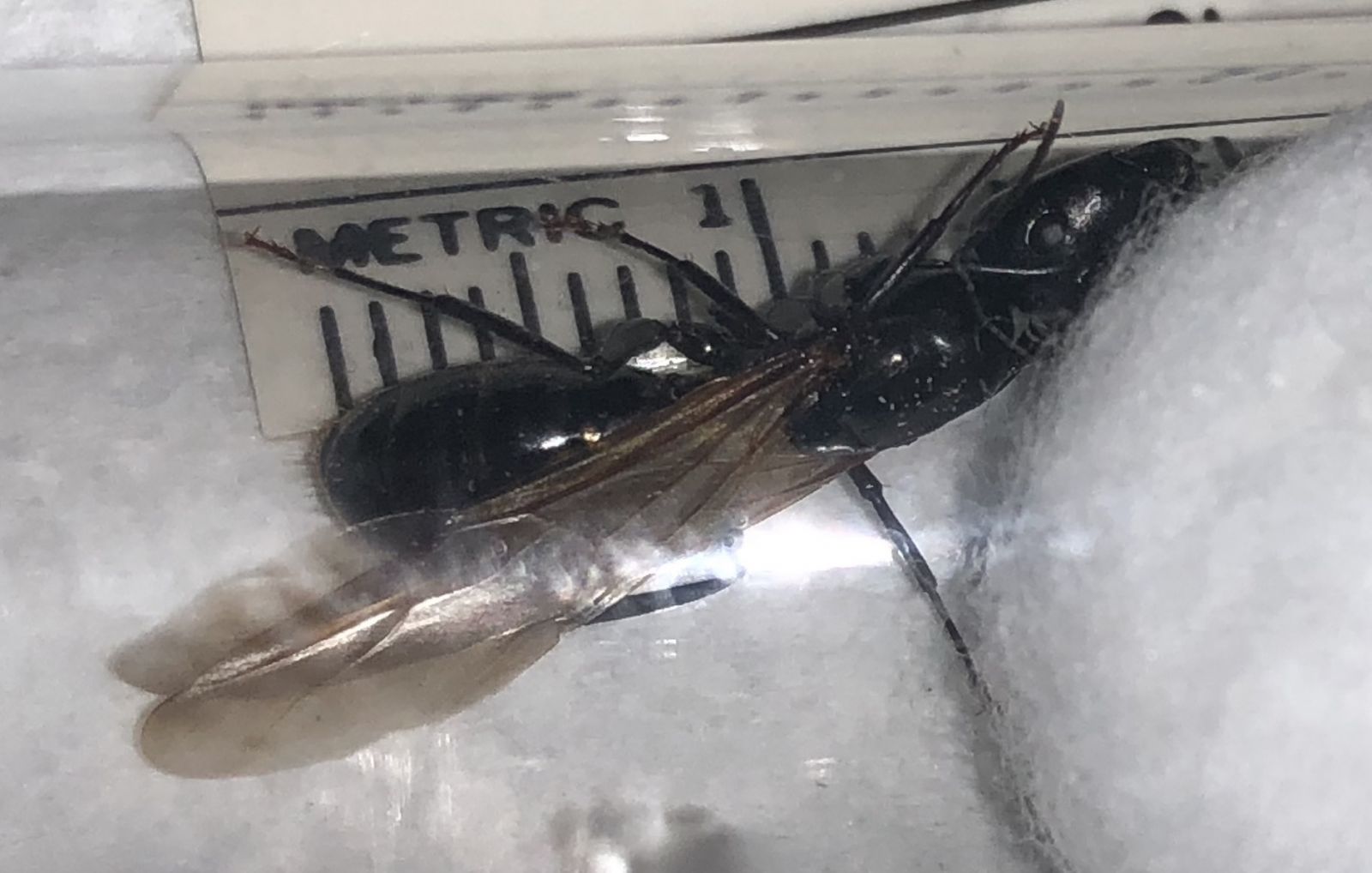
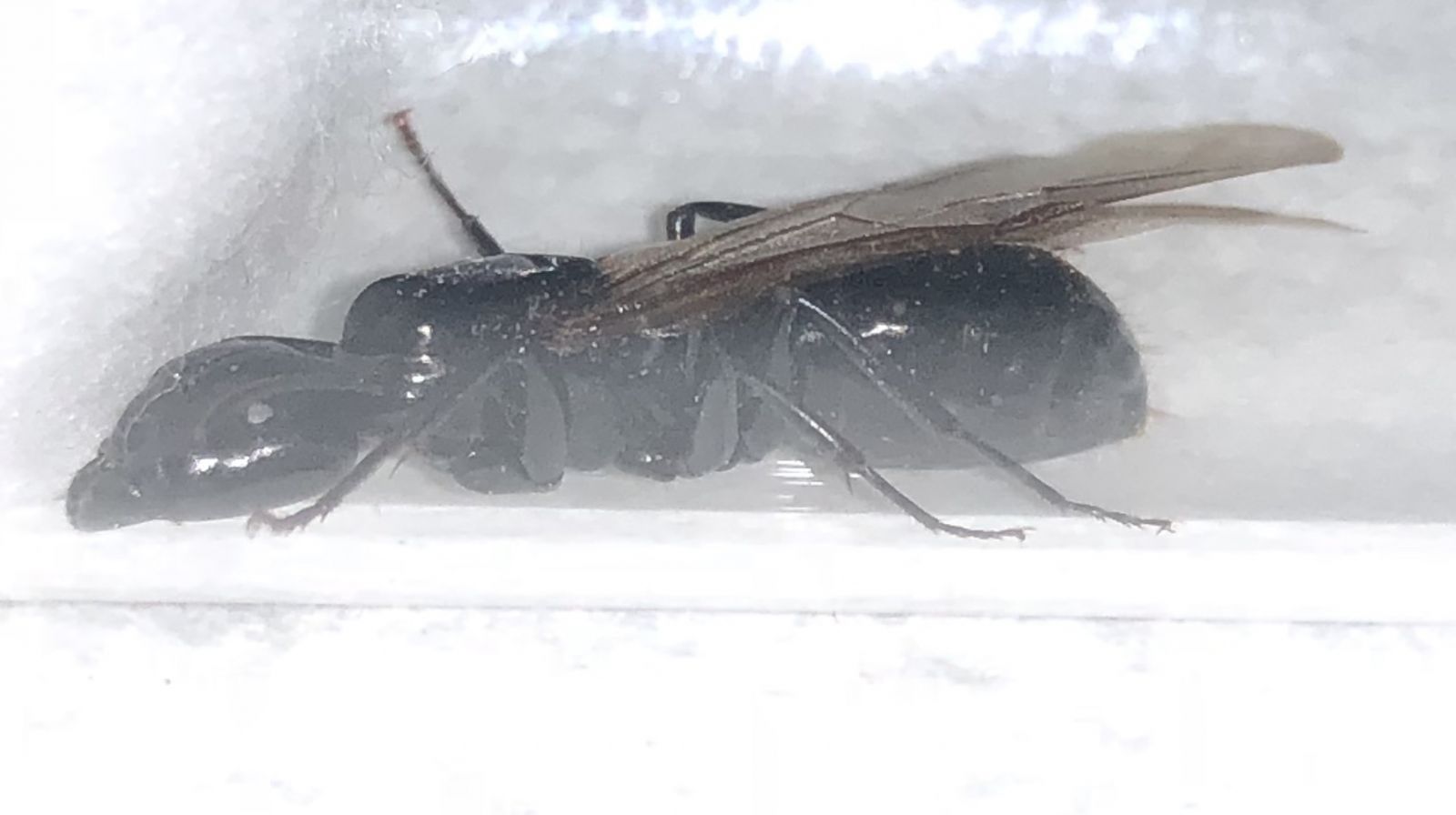
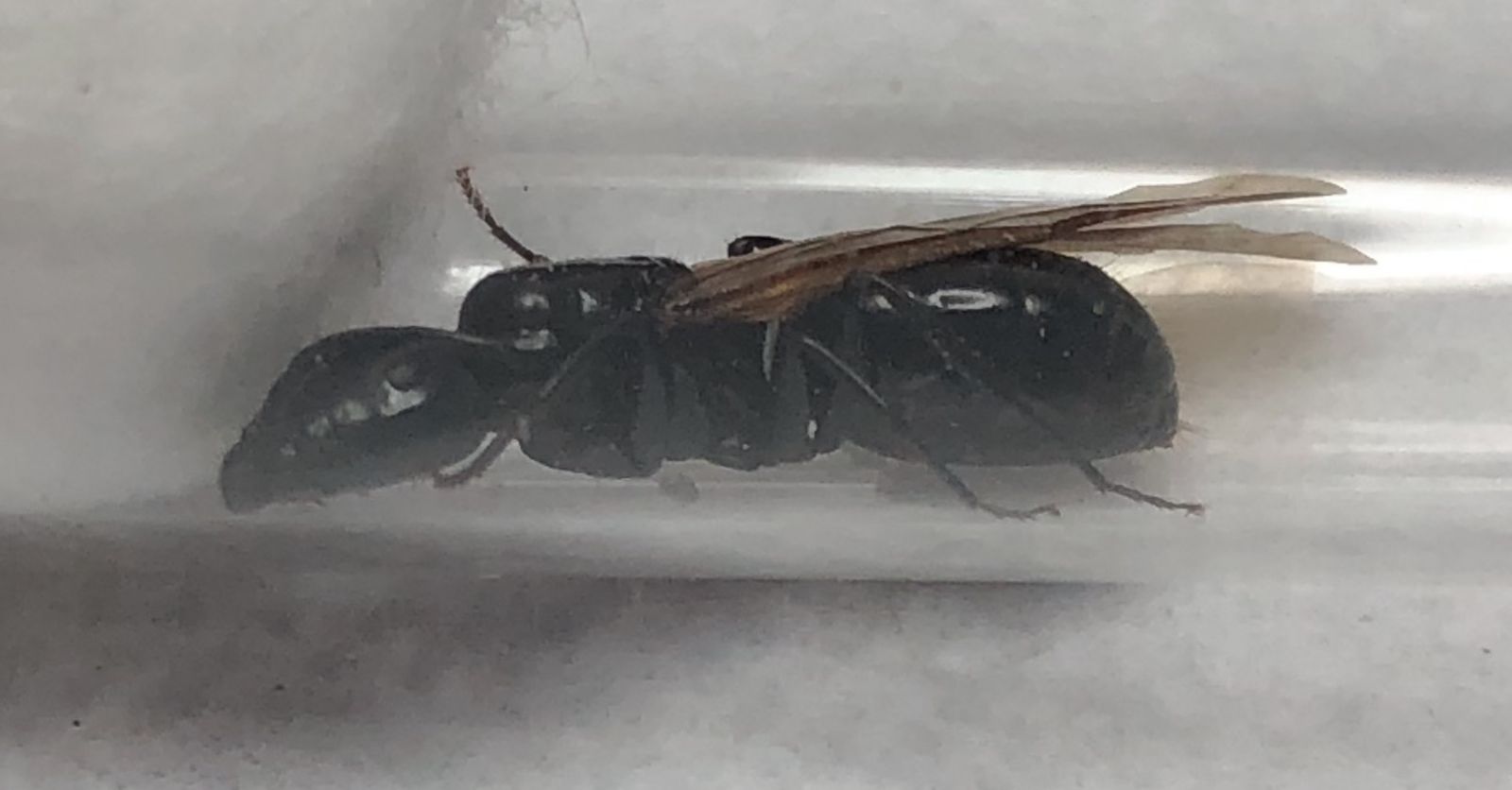
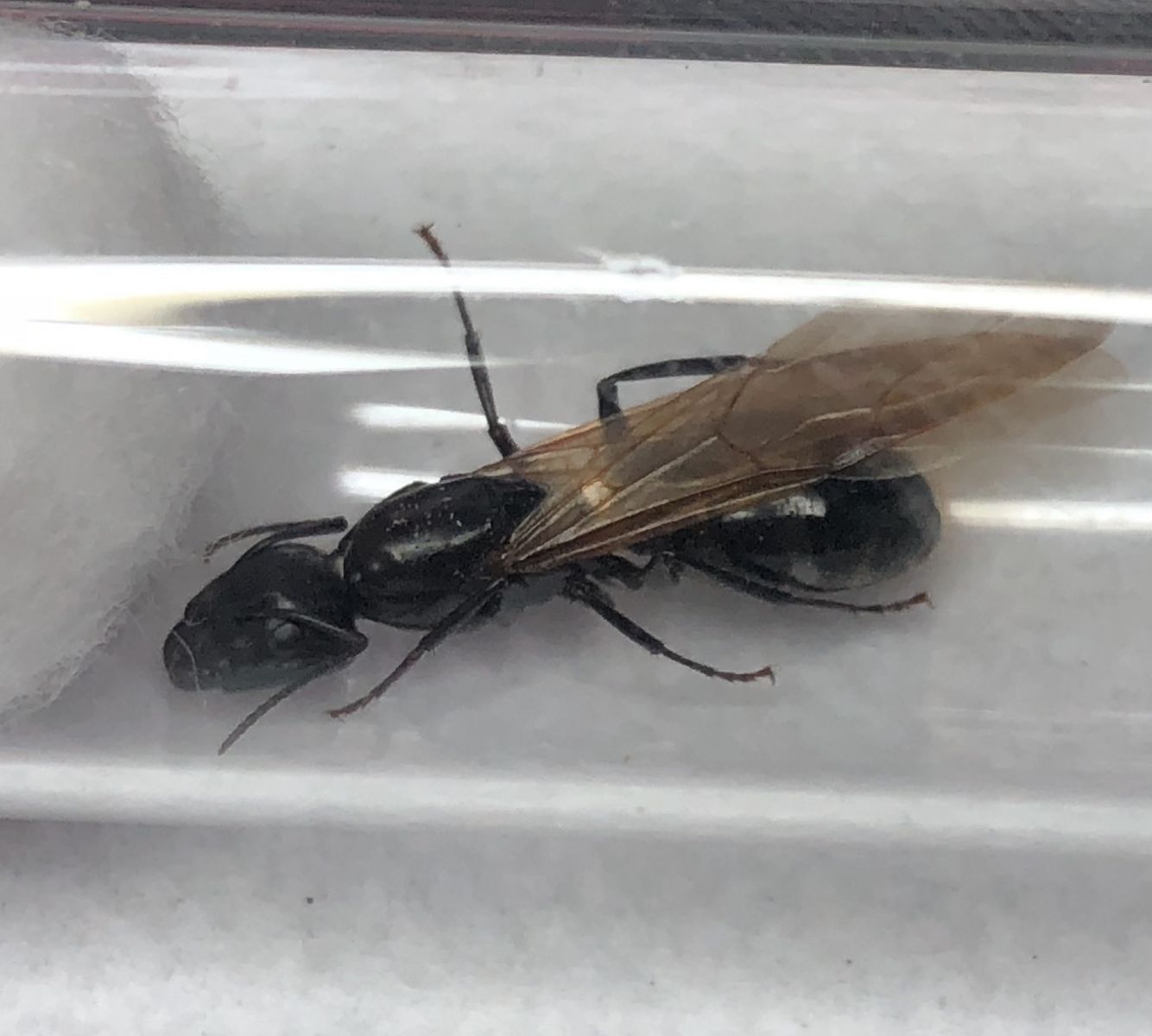
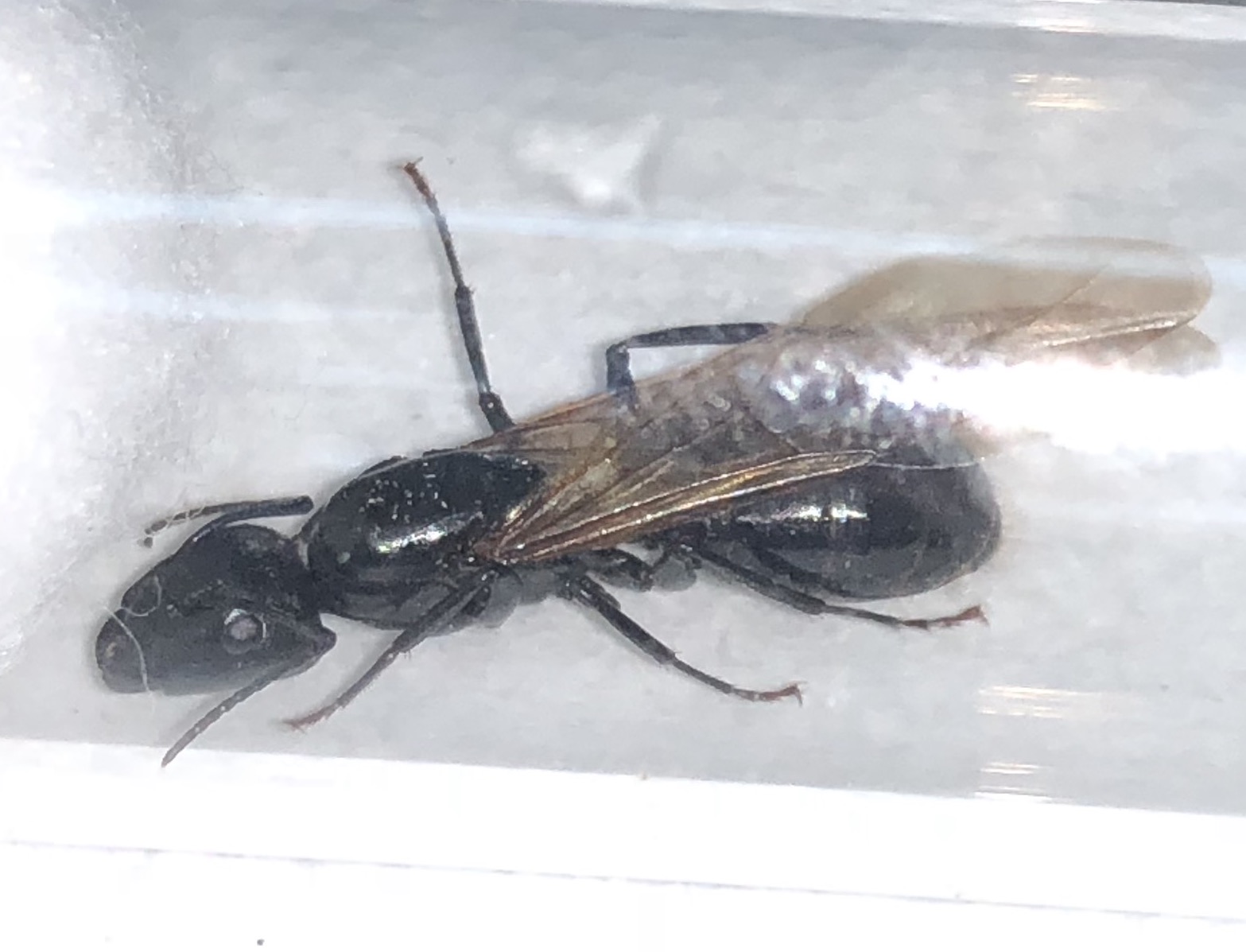
my guess is camponotus laevigatus... probably wrong but I figure they are at least camponotus.

















